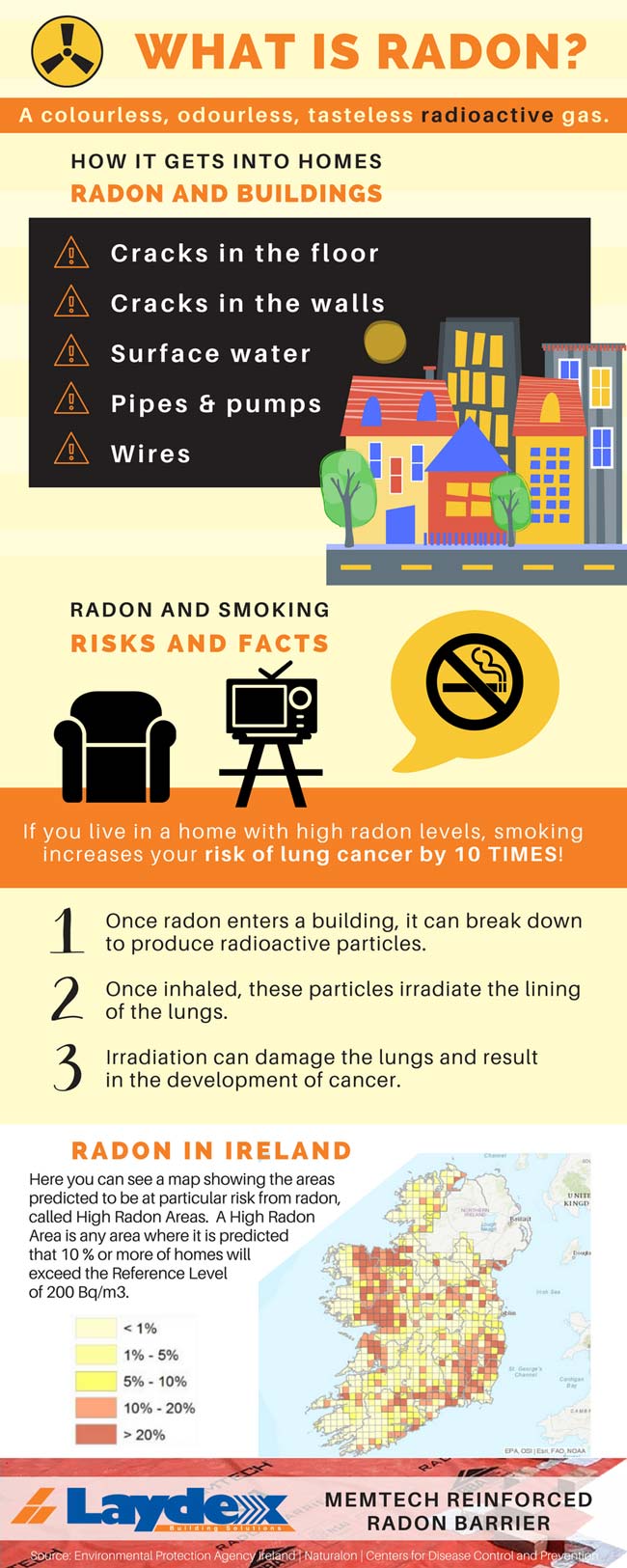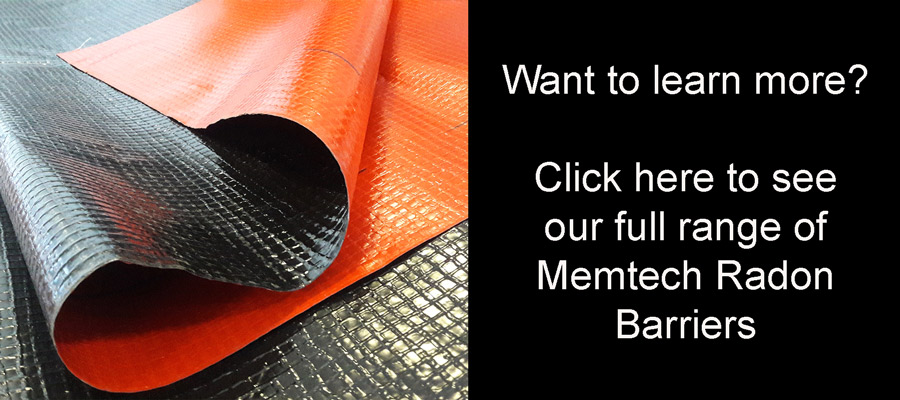Radon is an invisible, odourless, radioactive gas produced when uranium decays in the ground. Radon occurs naturally in Ireland and the country contains some of the highest radon levels in the world.
Outside, radon is harmless because it dissipates in the air. Unfortunately inside, it has the potential to be quite dangerous. Inside a building, people inhale tiny particles of radon, which then irradiate the lining of the lungs. Radon can cause lung cancer as it poses a particular threat to children, smokers, and ex-smokers. This odourless gas is the second leading cause of lung cancer after smoking.
Radon can enter into houses, seeping through any tiny cracks or gaps the foundation and floor. The gas also enters through the openings for pipes. It then becomes trapped in the house and accumulates to toxic levels over time. Alarmingly, not all homes need to have radon barriers installed. The homeowners are responsible to determine if they need to install radon barriers inside their homes.
Homeowners can purchase a radon test kit to determine if their home has a problem. The tests take three months because the radon level can vary greatly day to day, so the kit needs to monitor the levels for a significant amount of time. While some areas of the country have higher rates of radon than others, two houses side by side can have very different radon test results. It is not safe to count on a neighbour’s test results to determine if you need a radon barrier. Some homes in generally low radon areas do have serious radon problems.

How Do Radon Barriers Work?
Today, when you build a home or other structure it is crucial that you fit them with radon barriers.
Fitting between the foundation and the floor, these barriers cannot be retrofitted to older buildings. Older homes or workplaces with high radon levels have to use other radon mitigation measures such as increased ventilation and a radon pump. These barriers are now required in new homes in known high-radon areas.
A radon barrier is a flexible, impermeable membrane that blocks radon so it cannot enter the building. The Memtech 1 Radon Barrier is a puncture-resistant, low-density, polyethylene material that features a polypropylene reinforcing grid. It blocks not only radon, but also methane, carbon dioxide, liquid water and water vapour. The tensile strength of the Memtech 1 Radon Barrier is MD 500/ CD 470 (N/50 mm).
There is no effective way to determine if a house will have a radon problem prior to building it, and no good way to retrofit a radon barrier. Making a barrier a standard feature of new homes and other buildings offers real protection to the occupants as well as peace of mind. You must ensure that new homes have appropriate radon barriers if they are in a radon rich area.This law does not apply to homes in low radon areas. They are only required to have standby radon sumps. Each of those homes are at risk of being the exception and developing a dangerous accumulation of radon.
Many homeowners would rather prevent radon from entering their home than worry about pumping it out after they and their family members have inhaled the cancer-causing gas.






